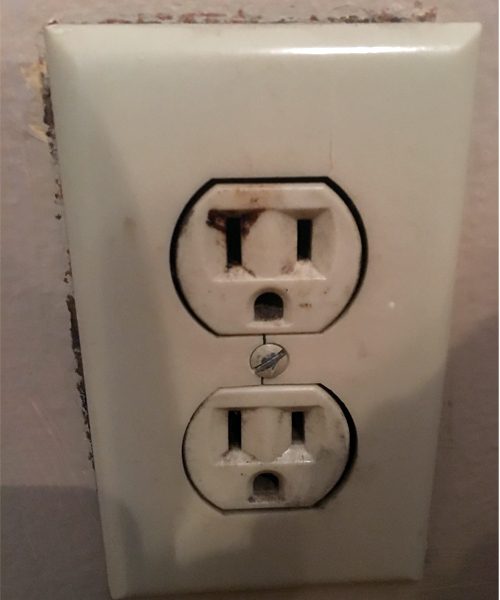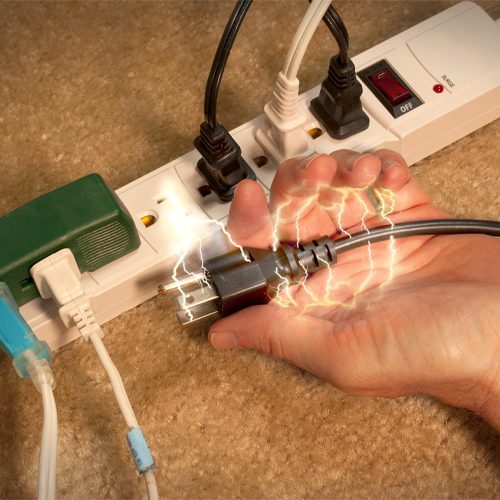How to get rid of static electricity
Static electricity is a nuisance that everyone experiences, and most people write it off as a minor annoyance to be ignored. But that static discharge could have more oomph than you think. The ancient Egyptians, and other civilizations, actually created and harnessed static electricity for a number of applications, including making their statues give a static shock when worshipers touched their lips to the shrine. And, in some modern settings, it can still be a serious fire hazard.
Today, static electricity seems to be everywhere, hiding in metal door knobs and that sweater you pulled out of the dryer, waiting to strike. But there are some situations in which something that seems like a static shock is actually a sign of a bigger problem.
Electrical inspections can be expensive, and you don’t want to take risks with potential problems with wiring. But at Rytec we offer affordable electrical services without fishing for add-ons, and this article should help you recognize when you don’t, or do, need to call us.
What is static electricity?
Most people know that static electricity is what makes a balloon stick to the wall after rubbing it on your clothes, or your hair stands up when you put on a sweater straight from the dryer without a dryer sheet. But what is static electricity really?
When you get right down to it, all matter has an electrical charge, made up of equal parts of protons and electrons (parts of the atom). When two objects create friction, it moves electrons from one object to the other, causing an imbalance of protons and electrons, which turns into static electricity. This energy is held until it is discharged as a shock or is grounded in some way.
When you experience a static discharge, it is a small electric shock that is startling, but harmless to most. However, the electric shock can feel the same as the small shock you might get from a malfunctioning electronic or appliance. If you’re not sure that the shock you received was static and it might be from another source, you should contact us right away to ensure you don’t have a hazardous wiring issue. We will troubleshoot with you over the phone to rule out static electricity before coming to do an inspection.
What causes static electricity in the home?
The most common culprit of static electricity in the home is dry air. When the air is dry, as it will be in winter, it creates the perfect environment for friction to create static electricity as objects come into contact with one another. Some of the most common causes of static electricity in the home are:
- Some types of clothing are more likely to hold static electricity, and may even give off a static shock when you first open the dryer door.
- Friction between your feet and the carpet can cause a significant amount of static charge to build up, discharging when you touch a door knob or other conductor (including a person).
- Sometimes just the friction of your hand running across a table cloth can cause a static charge.
Again, most of the time this static electricity is just a nuisance, but it can cause some damage. If you’re in the wrong environment, static electricity can actually cause a fire. This is why you are not supposed to get in and out of your vehicle while you are pumping gas. The spark from a static shock could ignite the fumes.
But even in your home, there could be repercussions. Electronics can be easily fried with a charge of static electricity, from DVD players to mobile phones. On the other hand, problems with outlets and wiring can also cause these items to short out. If you’re not sure why your electronics are failing, contact us to schedule an affordable electrical inspection to ensure you and your family are safe.
Common household areas that generate static electricity
You have probably already guessed that your laundry room and closets are the first places to look when it comes to sources of static electricity. There are many fabrics that when rubbed against other fabrics causes a significant static charge to build up. Anyone who has pulled blankets out of the dryer on a cold and dry winter day without having used a fabric softener knows that the shock you get from such clothing can be pretty strong (and painful).

But there are several other areas in your home that are more prone to a buildup of static electricity. These include:
- Entryways: Whenever your feet slide across the floor, such as when coming into a carpeted room, it creates friction that leads to static electricity.
- Bedrooms: If your air is very dry, your blankets and bed linens might generate a static charge as you make the bed, or as you’re getting into it.
- Kitchens: Plastic grocery bags and trash bags can hold a lot of static, and they build it up quickly through friction on other bags (and you).
If you primarily experience a small shock when in the same area of your home, and you don’t have these hazards or you’ve taken steps to prevent them, you may actually have a problem with your wiring, and should call us right away for emergency electrical repair.
Ways to reduce static electricity in your home
The first and most important thing you can do to reduce static electricity in your home is to purchase a humidifier. The reason most homeowners have more issues with static electricity in the winter is that the air is so much drier. That dry air makes friction more possible, which means more static electricity.
Some other ways you can reduce static electricity in your home are:
- Use fabric softener for most loads of laundry to keep fabrics from creating friction while drying or being put away. (Check washing instructions first for delicates.)
- Use a moisturizing lotion to prevent friction against objects as you go about your day.
- Use anti-static mats under frequently moved chairs in carpeted dining rooms or offices.
- Skip the shoes. Leather soles build up a lot of static electricity. Going barefoot, or wearing socks of 100% cotton, while indoors can significantly reduce the amount of static electricity in your home.
- Rub dryer sheets on fabric surfaces of furnishings.
And did you know that your greatest weapon against static electricity in the home is baking soda? Baking soda reduces static electricity by acting as a barrier between negative and positive charges. It can eliminate static electricity in carpets, upholstery and other fibers when mixed with water and sprayed directly. Adding baking soda to your laundry also eliminates static electricity, and acts as a natural fabric softener.
When NOT to assume a shock is static electricity
Sometimes electric shocks can be so small that they are easy to write off as static electricity. But sometimes these shocks are a sign of a problem with your outlets. If you get an electric shock when touching a metal appliance, such as a toaster, it could be an indication that there is a wiring problem rather than a static electricity buildup.
It’s important that you take such risks seriously to ensure your family’s safety. We know electrical inspections are expensive, but we will do our best to keep our services affordable and limited to necessary repair items. If you’re not 100% sure of the safety of your electrical outlets or appliances, contact us today for reliable, knowledgeable, and straight-forward assistance.

